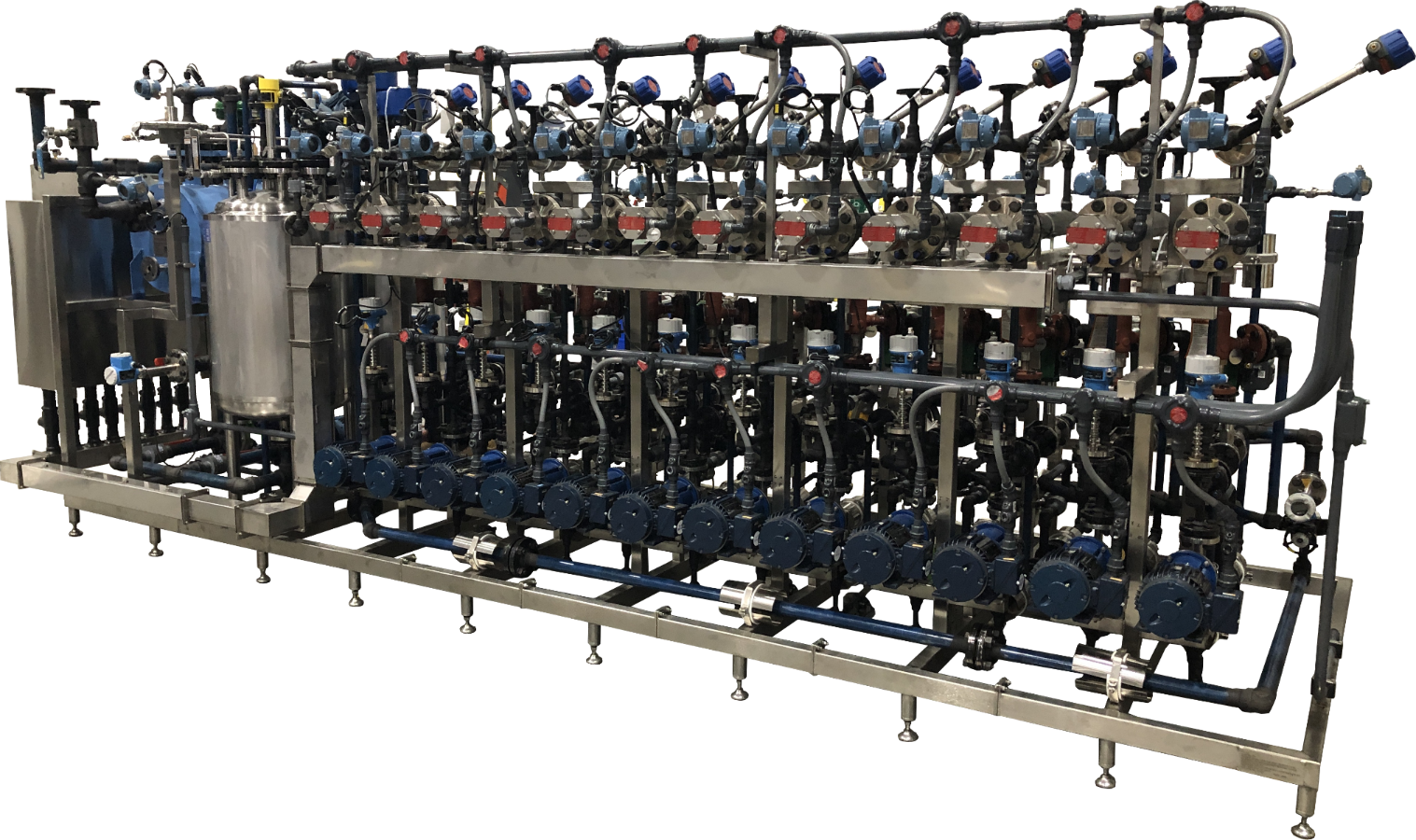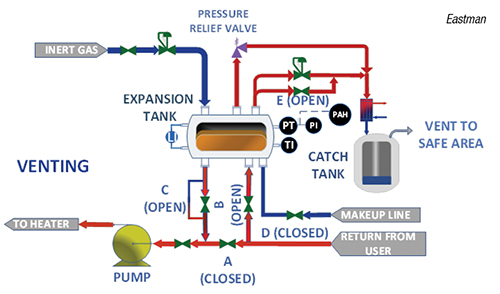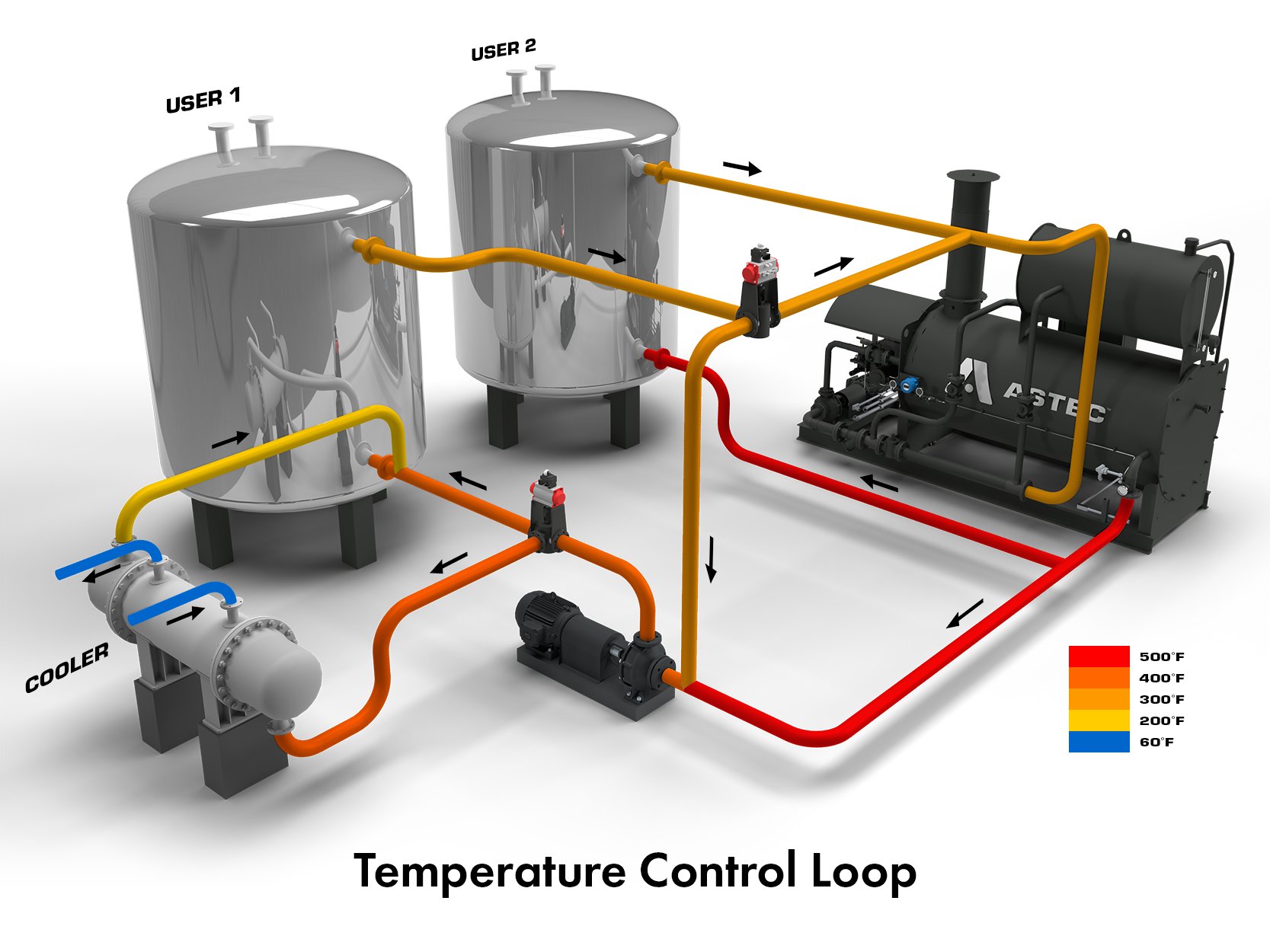The Function of Heat Transfer Solutions in Sustainable Power Solutions for the Future
Heat transfer systems are important in the mission for lasting energy remedies. They optimize thermal energy administration, improving the performance of eco-friendly innovations. By utilizing systems like transmission, convection, and radiation, these systems decrease power losses. Their function in solar thermal and geothermal applications is especially considerable. As advancements arise, the potential for further developments increases essential concerns concerning future power techniques. What advancements will shape the landscape of sustainable power?
Recognizing Heat Transfer Solutions

The Value of Thermal Power Administration
Effective thermal power administration is vital for taking full advantage of energy efficiency and decreasing waste in numerous systems. By controling temperature and maximizing Heat transfer processes, organizations can significantly lower power consumption and functional expenses. Effective monitoring includes the implementation of advanced modern technologies and methods that monitor and regulate thermal conditions within systems, ensuring that energy sources are made use of effectively. Additionally, appropriate thermal power monitoring adds to minimizing greenhouse gas exhausts, straightening with global sustainability goals. It additionally enhances system dependability and efficiency, causing boosted item top quality and longer tools life-span. Ultimately, focusing on thermal energy administration is an essential action in the direction of creating much more lasting energy remedies and fostering a liable strategy to energy intake in industrial and residential contexts.
Applications of Heat Transfer in Renewable Resource
While numerous renewable energy resources guarantee sustainability, the reliable application of Heat transfer plays an important function in their effectiveness. In wind energy systems, Heat transfer is used for wind turbine part air conditioning, boosting performance and durability. Geothermal power counts on effective Heat exchange in between the planet's subsurface and the liquid flowing in the system, making best use of energy extraction. Biomass energy procedures likewise benefit from Heat transfer, as it aids in converting natural products right into useful fuel with pyrolysis and gasification. Additionally, in hydropower, keeping suitable temperature levels in reservoirs can improve power result. Each of these applications demonstrates the critical significance of Heat transfer systems in improving renewable resource technologies, ultimately adding to a much more sustainable energy future.
Enhancing Solar Thermal Power Efficiency
As solar thermal power systems continue to progress, enhancing their efficiency has become important for taking full advantage of energy output. Advances in Heat transfer technologies, such as improved thermal storage space products and cutting-edge Heat exchangers, play a significant duty in enhancing efficiency. By making use of sophisticated materials that have remarkable thermal conductivity, systems can move and record Heat more properly. In addition, integrating monitoring systems that adhere to the sun's course warranties that collectors obtain suitable solar exposure throughout the day. Utilizing nanotechnology in solar absorbers can better boost energy absorption prices. Including automated control systems assists manage temperatures and handle power circulation efficiently, leading to decreased losses and enhanced overall system efficiency. These enhancements lead the way for even more lasting solar thermal power solutions in the future.
Geothermal Heating: A Sustainable Solution
Geothermal heating presents a feasible option for sustainable energy, providing significant environmental benefits with lowered greenhouse gas emissions. Its effectiveness and cost-effectiveness make it an appealing choice to typical heater. Nevertheless, obstacles associated with application needs to be resolved to optimize its prospective effect.
Environmental Benefits of Geothermal
Standard heating methods contribute substantially to greenhouse gas exhausts, geothermal home heating provides a compelling choice that lessens environmental impact. By using the Planet's internal Heat, geothermal systems utilize an eco-friendly power resource, substantially decreasing dependence on nonrenewable fuel sources. This approach creates marginal carbon emissions, making it a cleaner alternative for residential and industrial home heating. In addition, geothermal systems promote energy effectiveness, as they call for less power contrasted to traditional heater. DVS Heat Transfer Systems. The application of geothermal power likewise helps in lowering air pollution, boosting regional air high quality and public health. As a lasting solution, geothermal home heating sustains environment adjustment mitigation initiatives, placing itself as a necessary element in the change in the direction of a greener future
Efficiency and Cost-Effectiveness
Exactly how does geothermal heating measure up in terms of performance and cost-effectiveness compared to standard home heating systems? Geothermal heating demonstrates premium efficiency, frequently attaining a coefficient of efficiency (POLICE OFFICER) of 3 to 5, indicating it creates 3 to five units of Heat for every system of electricity eaten. This effectiveness translates into lower operating expense, specifically in regions with stable geothermal sources. Initial installation prices can be higher than conventional systems; nonetheless, long-lasting financial savings on energy bills and minimized upkeep expenditures can counter these in advance investments. Additionally, many governments incentivize geothermal systems with discounts and tax credits, enhancing their cost-effectiveness. In general, geothermal heating arises as a financially sensible and lasting option to more conventional heating services.
Execution Difficulties and Solutions
Various difficulties can restrain the widespread implementation of geothermal heating unit, regardless of their clear advantages as a sustainable energy solution. High preliminary installation prices often hinder home owners and capitalists, making funding a considerable barrier. Additionally, the geographical restrictions of suitable geothermal websites limit access in specific regions. Neighborhood guidelines and permitting processes can likewise complicate project growth, causing delays. In addition, public understanding and understanding of geothermal systems remain reduced, hindering approval. To address these obstacles, targeted education projects can improve public knowledge, while federal government motivations can minimize financial worries. Collaborating with local authorities to enhance regulations may facilitate smoother job approvals, ultimately advertising the fostering of geothermal heating as a feasible, lasting energy choice.
Innovations in Heat Transfer Technologies
Developments in Heat transfer modern technologies play a vital role in boosting power performance and sustainability. Advanced Heat exchangers and stage adjustment products are at the forefront of these growths, using significant enhancements in thermal monitoring. These modern technologies not only enhance energy use but likewise add to decreasing environmental impact in numerous applications.
Advanced Heat Exchangers
Advanced Heat exchangers play an essential function in boosting power efficiency throughout various applications in sustainable power solutions. These gadgets assist in the transfer of Heat between 2 or even more liquids, significantly reducing energy usage in procedures such as industrial heating, air conditioning, and power generation. Developments in products and style, such as making use of nanofluids and small arrangements, have actually brought about enhanced thermal efficiency and decreased size requirements. Furthermore, advancements in electronic monitoring and control systems enable for enhanced operation, further increasing efficiency. By decreasing waste Heat and making the most of energy recovery, progressed Heat exchangers add to lower carbon impacts and support the shift toward eco pleasant innovations. Their continued advancement is vital for achieving global power sustainability objectives.
Phase Adjustment Products
The combination of phase change materials (PCMs) right into Heat transfer modern technologies represents a substantial innovation in energy monitoring and effectiveness. PCMs absorb and launch thermal energy throughout their phase adjustments, enabling reliable temperature guideline in structure products and energy systems. By keeping excess Heat throughout top periods and releasing it when demand rises, PCMs add to pack shifting and power conservation - DVS Heat Transfer Systems. This ability enhances the efficiency of renewable energy systems, particularly in solar thermal applications. Additionally, PCMs can boost the thermal comfort of interior atmospheres, lowering reliance on traditional heating and cooling down methods. As technologies in PCM formulas proceed to arise, their function in lasting energy services is positioned to grow, using promising methods for future research and application

Future Prospects for Heat Transfer in Sustainable Power
As the demand for lasting power options remains to climb, the duty of Heat transfer systems is becoming increasingly important fit future innovations. Developments in materials and styles are anticipated to improve efficiency in Heat transfer, lowering energy losses in various applications. The integration of sophisticated thermal storage systems, such as stage modification products and thermochemical storage space, will certainly allow better management of power resources. Research right into nanofluids and biomimetic Heat exchangers might additionally enhance thermal efficiency. The fostering of smart innovations will permit for real-time tracking and flexible control of Heat transfer processes. These advancements are positioned to considerably add to the total effectiveness and sustainability of power systems, leading the way for an extra energy-efficient future.
Frequently Asked Concerns
Just How Can Individuals Apply Heat Transfer Equipment in your home?

People can execute Heat transfer systems in your home by mounting energy-efficient appliances, making use of radiant heat, and enhancing insulation. These actions boost energy performance, reduce expenses, and promote lasting practices in property atmospheres.

What Are the Costs Related To Setting Up Heat Transfer Solutions?
The prices connected with mounting Heat transfer systems differ extensively, typically encompassing tools, installment labor, and maintenance. Variables such as system kind, home size, and regional policies greatly affect the overall expense entailed.
Exist Government Incentives for Heat Transfer System Installations?
Government motivations for Heat transfer system installments vary by area and can include tax gives, discounts, and credit histories. These monetary advantages aim to encourage fostering, eventually advertising power efficiency and reducing ecological influence within neighborhoods.
Just How Do Heat Transfer Systems Influence Power Bills?
Heat transfer systems notably affect power bills by enhancing power efficiency. By improving the transfer of Heat, these systems minimize energy consumption, leading to lower energy prices and developing a more sustainable approach to energy administration.
What Upkeep Is Required for Heat Transfer Systems?
Upkeep for Heat transfer systems includes routine inspections, cleansing of parts, checking fluid degrees, guaranteeing appropriate insulation, and changing used components. These tasks aid preserve efficiency, stop failures, and lengthen the system's functional life expectancy.
These systems facilitate the motion of thermal power from one tool to an additional, allowing the transfer of Heat for power, air conditioning, or home heating generation purposes. Geothermal power depends on efficient Heat exchange in between the earth's subsurface and the fluid distributing in the system, maximizing energy extraction. In addition, DVS Heat Transfer Systems geothermal systems promote energy effectiveness, as they need much less energy contrasted to standard home heating systems. Advanced Heat exchangers play an essential duty in enhancing power efficiency across various applications in lasting power remedies. Heat transfer systems significantly affect power expenses by optimizing energy efficiency.